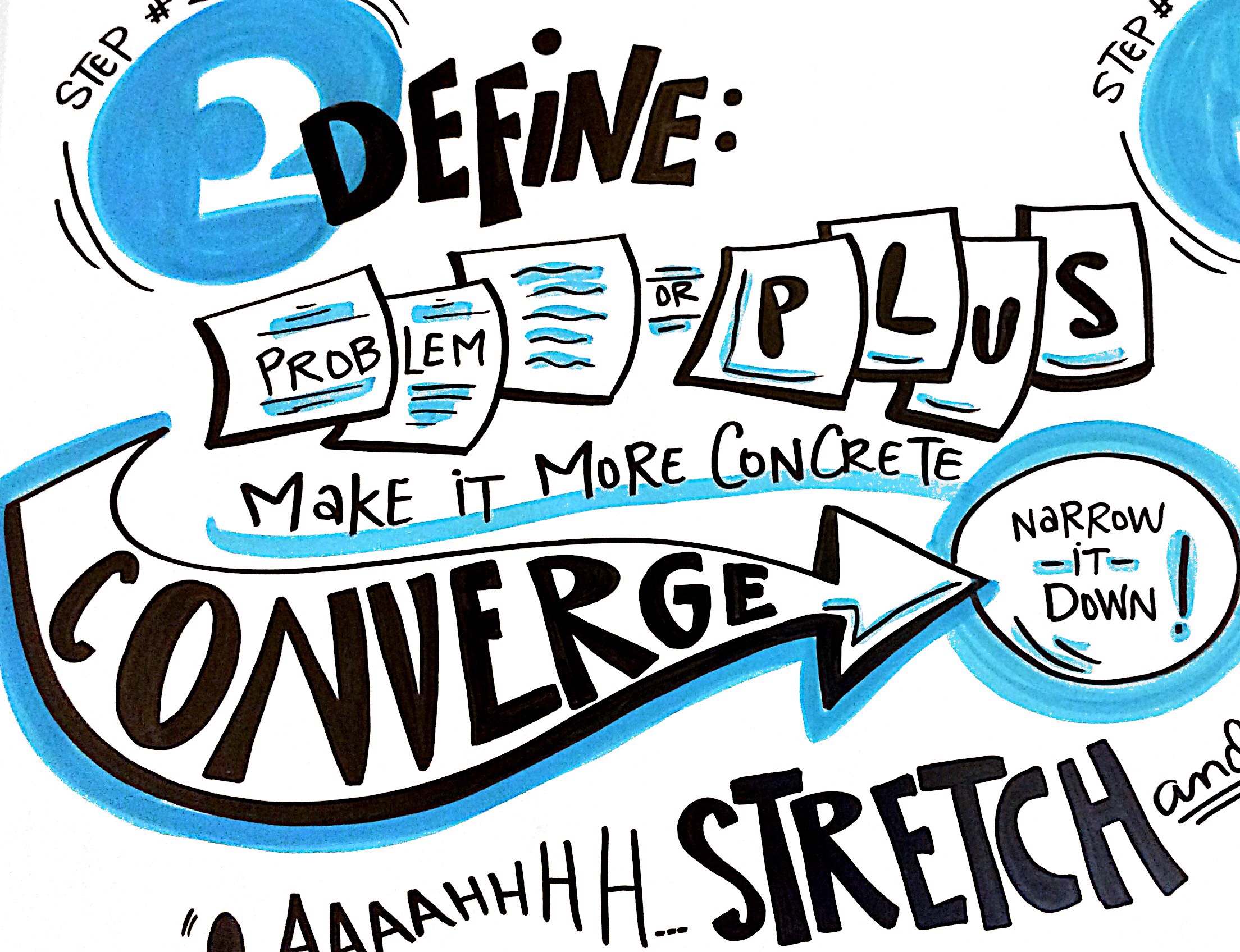People often think I do a lot of drawing while taking live visual notes. If you really look at the image above, you'll see there's really not much drawing there at all. Just some squares, a couple of circles, and an arrow. That's it!
When you write words inside simple shapes, those simple shapes start making your own notes a bit more visual. They become more dynamic. More interesting. The image and the message become more unified. And far more powerful.
A great way to make your own notes more visual is to write some of your words inside simple shapes — circles, squares, triangles, arrows, etc. Give it a try!
The image above is a close-up of a 4'x8' drawing, created live, in real-time during a Design Thinking workshop. Be sure to check out the entire image!
Visual Notes: How to Choose Between Graphic Recording and Sketchnotes
Graphic recording. Sketchnotes. Visual notes. The terms are often used interchangeably. But there are some distinct differences. Graphic recording is usually done on flip chart or larger paper, foam core board, or white board, with the graphic recorder standing in front of the group. Sketchnotes are much smaller (think printer paper or a notebook) with the sketchnoter sitting down - mine are usually black and white, but they can also be in color, too. Visual notes is an umbrella term including both graphic recording and sketchnotes. At least that's how I define things.
If you're looking to hire someone to create visual notes for you, how do you know if sketchnotes or graphic recording is best for you?
Generally, if you're going to bring someone in to work in person with your group, graphic recording is the way to go. Part of what makes graphic recording so powerful is that everyone in the room can watch the image unfold along with the conversation. This continually draws people back into the content and keeps them engaged. When displayed after, the images allow people to literally see the big picture of the content and discuss it with those around them. This would happen on a much, much smaller scale with sketchnotes, simply because only a few people can look at them at the same time.
If you're looking for visual notes of a video or audio file, then sketchnotes would probably work best. Sketchnotes can be just as powerful as large graphic recording images when displayed online. If nobody will be around to watch the notes unfold and you're only interested in digital files, it really doesn't matter what size the original notes are.
The sketchnote above was created from an audio file for the online course The Business Soul Sessions.
Spot Illustration: A One Word Story
Spot illustrations are simple drawings that illustrate one simple concept or word. (That's how I define them, anyways!) Often, spot illustrations turn that concept or word into a simple story. And, as anyone in marketing, sales, communication, and pretty much any other type of business knows, stories are where it's at.
Stories grab attention and draw people in. They make people curious and give them a reason to care. They can bring personal meaning to technical explanations. Stories bring things to life. Even if only a tiny glimpse of the story is told.
That's what spot illustrations do. They bring things to life and give just a glimpse of a story. Enough of a glimpse to grab attention, draw people in, and make them curious enough to find out how the story ends.
Contact me to have some hand-drawn spot illustrations created especially for you!
Synthesis Images: What Are They?
Who would want a synthesis image and why? Any number of folks for any number of reasons! Companies, nonprofits, or businesses like them to sum up lengthy reports. Website owners like them to show what their website has to offer in a glance. Educators use them to give the big picture of their topic. Professionals use them to showcase their experience...the list goes on!
No matter who uses a synthesis image or why, social media loves them! So if you're looking to draw people into your content, try a synthesis image.





